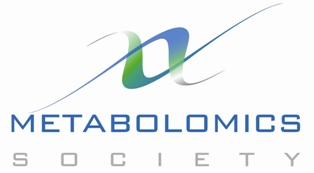Cool tools:
Metabolomic devices for companion
diagnostics and personalized medicine
When former US President Bill Clinton announced
the completion of the Human Genome Project in
2000, one commentator heralded it as “the
biological equivalent of the moon landing,” and
it was widely considered the gateway to
locating—and presumably curing—our most complex
medical conditions.
The Human Metabolomic Project, Canada’s quieter
biological voyage launched in 2006 to catalog
chemical compounds, and has made enormous gains.
The project’s founding director, Dr. David
Wishart, hopes to display its power with a
prototype gadget he expects to see in your hand
within a decade.
Because the gadget’s name is a
mouthful—Metabolomic Device for Companion
Diagnostics and Personalized Medicine—Dr.
Wishart has nicknamed it the “Metabolomic
Tricorder,” after the fictional Star Trek device
that provided instant medical diagnosis and
analysis with the wave of its wand.
Wearing a polo shirt, khakis and bent ball-cap,
the University of Alberta researcher bears
little resemblance to Dr. Leonard “Bones” McCoy,
and his gadget doesn’t look much like a
Tricorder. Instead of being waved outside the
body, the portable device analyzes blood, urine
and saliva samples for their
metabolites—chemical compounds produced within
the body. In addition to aiding diagnoses, it’s
also predictive, opening the possibility of
treating predispositions to illnesses such as
colorectal cancer, diabetes and pre-eclampsia
(the number one killer of expectant mothers).
Metabolites are molecular biomarkers that, in
various patterns, tell a more accurate story of
our health than DNA because they reveal
environmental changes. Think of each metabolite
as a musical note and each disease as a song.
“If someone played only one note from a song,
you wouldn’t recognize it, but if you can play
30 notes, the highs and the lows, in the right
sequence, you can make out a song,” says
Wishart. He thinks his technology can recognize
up to 40 songs (or disease signatures) with the
40,000 compounds catalogued thus far. “It’s an
emerging field, with little competition, so that
means there’s a lot to discover.”
Much of the required technology, such as mass
spectrometry, has existed for years. For
example, a trace of blood from every newborn in
Alberta goes to labs where mass spectrometers
measure chemicals to identify genetic disorders
or metabolite errors. Colon cancer screening
uses a similar process. “Billions of these tests
are done in North America every year, but they
need these big instruments that cost $2 million
and could fill up a boardroom,” says Dr.
Wishart.
Dr. Wishart and his team aim to make these
screenings cheaper, faster, and more efficient.
Initially this will take the form of easy-to-use
kits. But, eventually, Dr. Wishart hopes it will
be done with a metabolomics device that fits in
your pocket just like Dr. McCoy’s Tricorder.
The $8 million project is funded by AIHS,
Pfizer, Genome Canada and, until recently, the
National Institute for Nanotechnology, to which
Dr. Wishart is cross-appointed. It began two
years ago in two phases: mastering the
technology and miniaturizing it. Dr. Wishart
says the kits could be in research labs within a
year, and in clinical labs within three. The
tricorder devices could be in your G.P.’s office
within five to eight years.
The project had a head start because Dr. Wishart
himself is a pioneer in the field of
metabolomics. “If you’re the only kid in the
sandbox, you’ve got it to yourself,” observes
Dr. Wishart, who in 1999 co-founded Chenomx (as
in “chemical genomics”), a software company that
measures metabolic data. At the time, the field
was so cutting-edge that the word “metabolome”
had only just been coined.
Today there are more kids in the sandbox, thanks
in part to Dr. Wishart’s research, but Alberta
remains a world leader. “Metabolomics could be a
uniquely Albertan industry,” says Dr. Wishart.
“A lot of the know-how literally exists right
here in Edmonton.”
|













